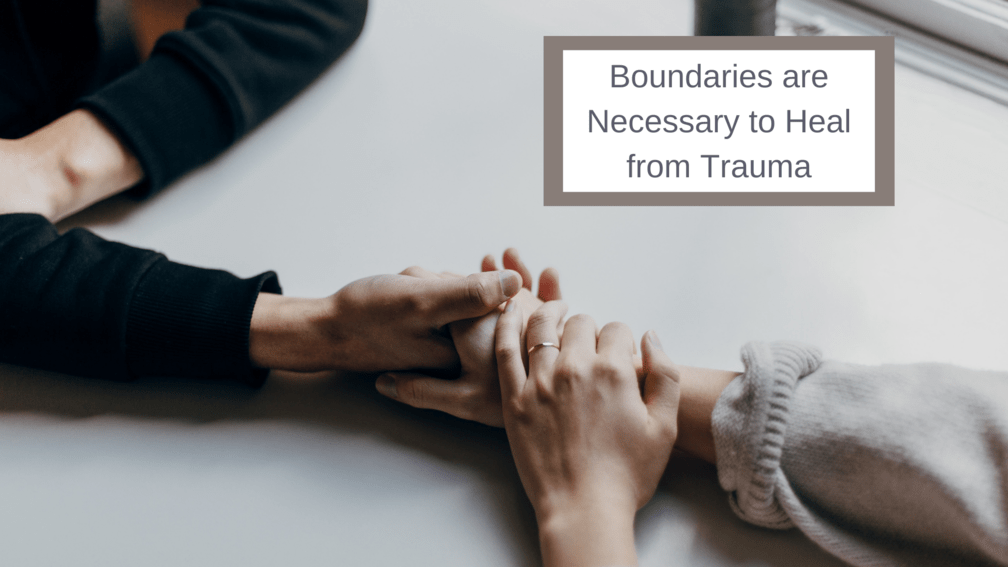
The experience of trauma can change the way we think, feel, and express ourselves in a multitude of ways. Healing from trauma often involves spending time reclaiming a lost or diminished sense of self. Boundary setting is an important way to reestablish the individual’s feelings of self-worth and stability.
Boundaries & Why They’re Important
Boundary is a word borrowed from geography. A boundary is the line separating one place from another. In our lives, boundaries show us what separates us from others. They help us to develop and maintain a clear sense of who we are. These boundaries can and should change and evolve over time – just like we do. They exist to show us who we are in a given moment and help us to feel stable and secure. There are many types of boundaries, including:
- Physical boundaries – these boundaries determine what you are and are not comfortable with in your physical space. This includes personal touch, sexual expression, and boundaries related to material possessions in your space.
- Emotional boundaries – these boundaries relate to when and how we choose to express our emotions and feelings with those around us. They also include how others can and should express their emotions to us.
- Intellectual boundaries – good intellectual boundaries advocate for and respect our own thoughts and ideas as valid and valuable. Intellectual boundaries also treat other people’s thoughts and beliefs with due respect, but they do not place greater value on the thoughts of others.
- Spiritual boundaries – these boundaries protect freedoms of religious expression and respect the beliefs of others. They also allow for non-religious exploration of the individual’s role within the world and how they perceive their existence and self-worth.
How Boundaries Help Those Healing from Trauma
Boundaries are an essential part of the trauma recovery process for two main reasons: they increase feelings of safety and self-worth. Following a traumatic experience, people often feel less safe, stable, and secure. This is especially true if they are regularly confronted with reminders of their trauma. Setting boundaries is a good way to feel safer even in situations where triggers arise. Boundaries allow those who are healing from trauma to express their needs clearly to others in their lives, so people know how best to provide support.
In addition to increasing a sense of safety, boundaries also help those recovering from trauma to develop a greater sense of self-worth. Surviving trauma can change the way we view ourselves. Trauma may involve violations of physical, intellectual, emotional, and spiritual boundaries. This can lead to the trauma survivor doubting their own value and feeling as if they don’t deserve better. Beginning to set and maintain good physical, intellectual, emotional, and spiritual boundaries again will help to restore the diminished sense of self-confidence.
Boundary Setting Basics
Setting boundaries often sounds like a great idea, but actually going through with it can be really challenging. During therapy for trauma survivors, we often spend a significant amount of time working on boundary setting, and therapy is a great resource if you want to develop this skill. Below, we’ve included some basic steps for setting and maintaining good boundaries:

- Take small steps – it can be very overwhelming to start creating boundaries with everyone in your life all at once. Start by setting a few small boundaries. Have a nosy neighbor who always brings in your mail as an excuse to snoop? Tell them that you’re not comfortable with that. Does your mother call you three times a day, but you really don’t always have time to talk? Kindly let her know that you can’t always drop everything, but maybe you can have one longer call a week instead? Take small steps and build your boundary-setting confidence.
- Consistency is key – once you set a boundary, try to stick with it as much as possible. Boundaries are allowed to change and evolve, but remember, they should be changing and evolving based on your needs and values – not those of other people.
- Start at home – don’t feel ready to set boundaries with other people? Start with personal boundaries. If you want to spend less time on social media, start limiting your social media time each day. Need a little more down time? Schedule a few hours of relaxation into your days off. Setting boundaries for yourself allows you to experience the benefits of boundaries in a safe space, creating increased confidence.
- Communicate – even if you’ve already set a boundary, keep communicating and affirming this boundary as often as you feel necessary. This helps to ensure the people you set boundaries with remain aware of your boundary. If your boundaries are changing, let people know why.
Ready to Get Started?
At LMV Counseling, we can help those who are healing from trauma to develop their boundary-setting skills, so they can feel safer and more confident, moving through the trauma recovery process. If you’re interested in learning more about boundaries or how therapy can be an essential part of the healing process after recovery, please don’t hesitate to get in touch.

